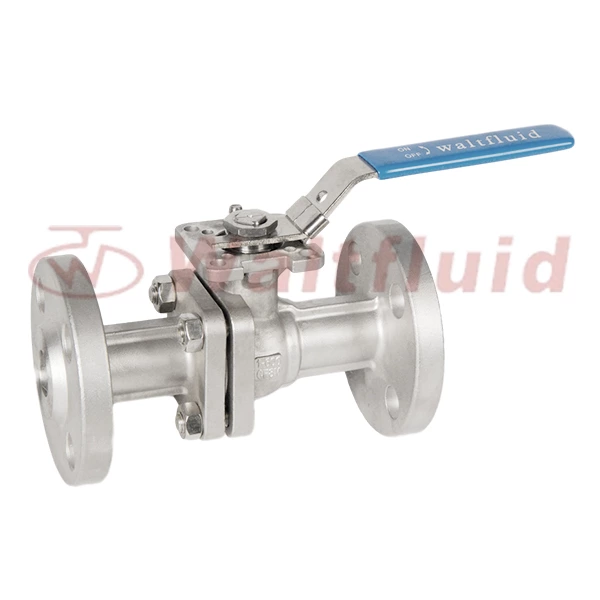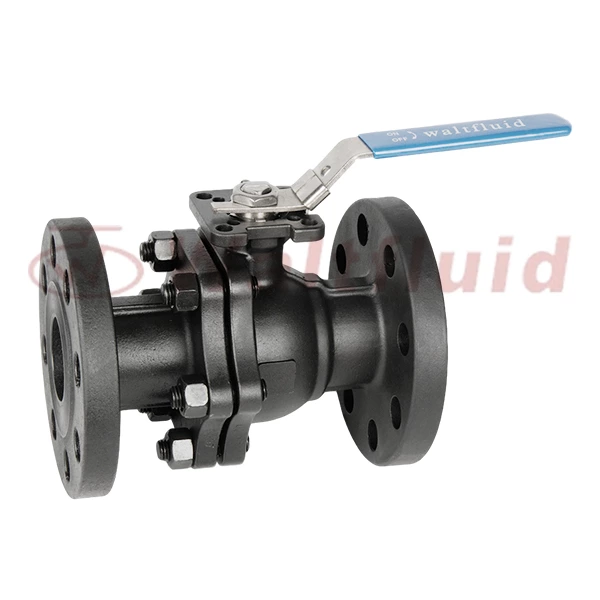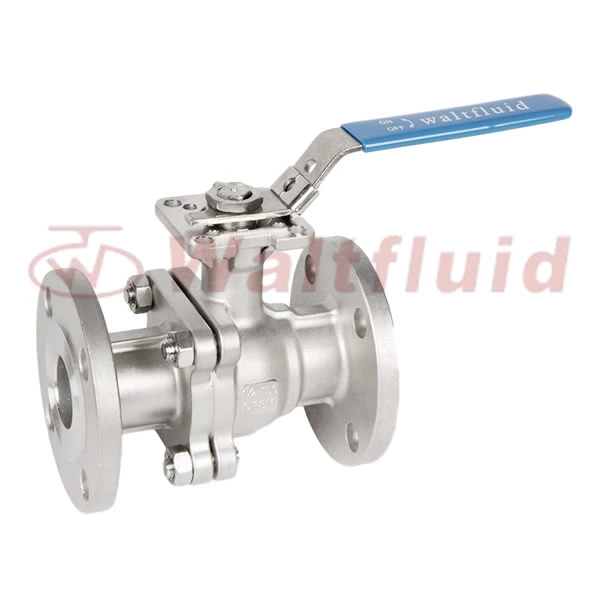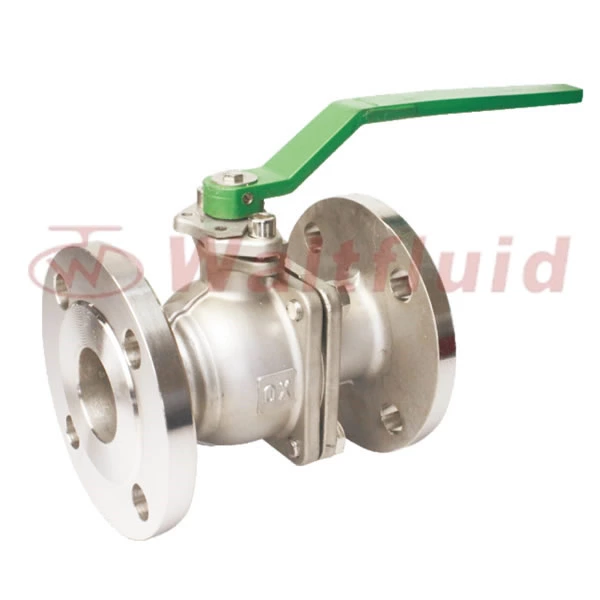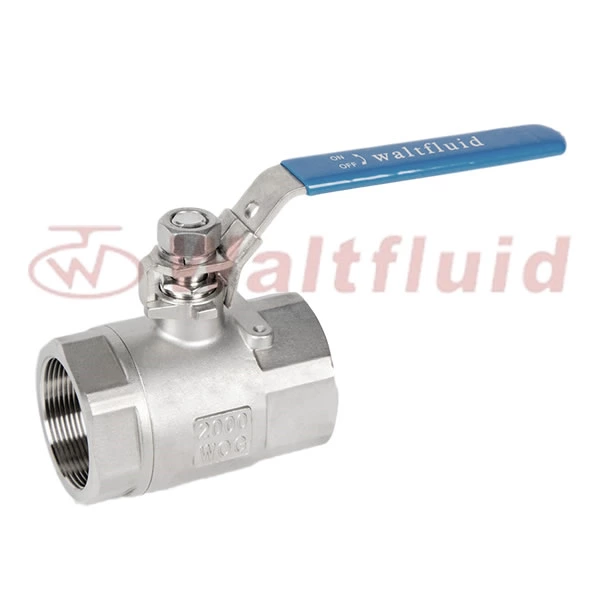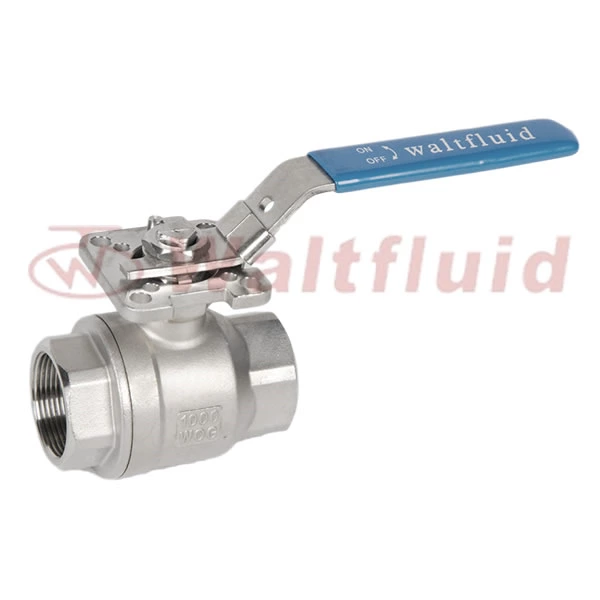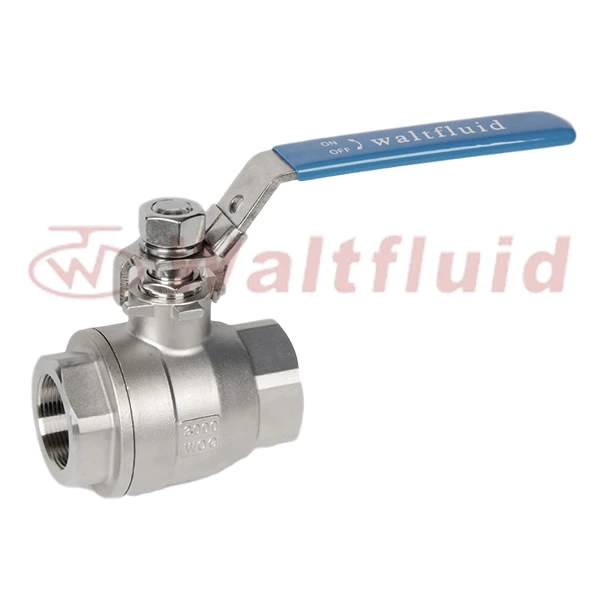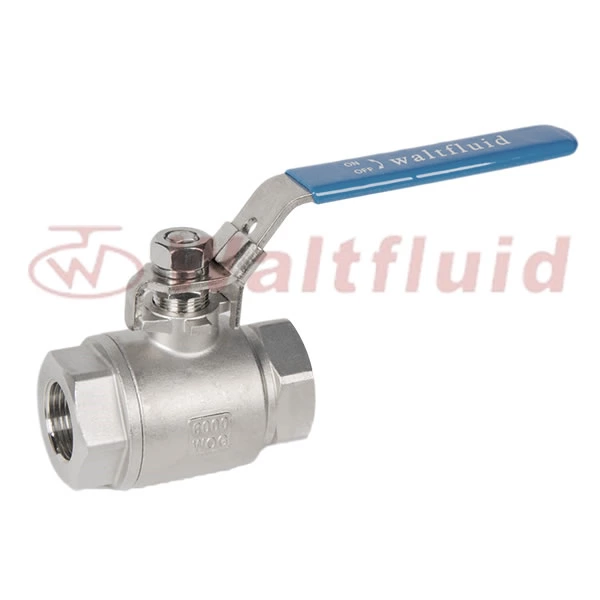Selection Of Pneumatic Ball Valve Materials And Matters Needing Attention In Working Conditions
2 Piece Threaded Ball Valve What should be paid attention to when designing in harsh working conditions:
Pneumatic ball valve control is the most commonly used terminal control element in automation control in industry. Pneumatic ball valve adjusts the flowing fluid (medium) to compensate for load flow and make the controlled process as close to the required set point as possible. Based on its importance in the field of industrial automation, the design and manufacture of pneumatic ball valves are particularly important, especially for some strict and harsh working conditions, such as high temperature, high pressure difference, high flow rate, cavitation, etc., which will be discussed from the aspects of materials, structure, manufacturing, etc.
I. Selection of pneumatic ball valve materials:
1. Metal materials; materials are crucial factors, such as material properties, creep, thermal expansion rate, oxidation resistance, wear resistance, thermal abrasion and heat treatment temperature, etc. These are the first things to pay attention to. Under high temperature conditions, creep and fracture are one of the main factors of material damage, especially for carbon steel. When exposed to above 425°C for a long time, the carbide phase in the steel may be transformed into graphite. For austenitic stainless steel, it can only be used above 528°C when the carbon content exceeds 0.4%. Therefore, when used at high temperatures, the tensile strength, creep, high temperature aging and other parameters of the valve body material should be calculated separately. For the design of valve trim, the hardness of the material at high temperature, the thermal expansion coefficient of the matching parts, the thermal hardness difference of the guide parts, elastic deformation, plastic deformation, etc. should also be considered. In the design, the corresponding safety factor and reliability factor should be given to ensure that the damage caused by multiple factors is avoided. And be familiar with the creep rate of the material at high temperature to select the appropriate stress so that the total creep of the material does not extend to fracture within the normal service life or allow it to produce micro-deformation without affecting the normal use of the guide parts.
In order to avoid wear, erosion and cavitation on the surface of the pneumatic ball valve trim (valve core, valve seat), the thermal hardness of the material should be considered under high temperature conditions to prevent the change of metal hardness. Under high pressure difference, most of the energy of the fluid is concentrated in the valve trim for release, which may overload the valve trim. Under high temperature, the mechanical properties of most materials deteriorate and the materials become soft, which greatly affects the service life of the valve trim. Therefore, the right material should be selected to extend the service life of the valve. In addition, the effect of high temperature aging on the physical properties of the material, such as changes in toughness and intergranular corrosion, should also be considered. When the use temperature reaches or exceeds the heat treatment temperature, the valve trim will have annealing, hardness reduction and other problems. To prevent the hardness of the material from changing, the maximum temperature limit must be selected within a safe range. For the same medium, under high temperature conditions, the activity of its molecules is relatively active. Some generally corrosive media may cause serious corrosion damage to the metal material of the valve body and valve trim. The medium penetrates into the metal in a high-speed ion state, causing the material properties to change, such as thermal expansion and intergranular corrosion. Therefore, in addition to cost-effectiveness, the selection of materials should also consider the failure caused by multiple factors.
Under high pressure difference and high flow rate conditions, even if the temperature is room temperature, the material properties should be evaluated so that the material can meet the working conditions. Generally speaking, at room temperature, when the pressure difference exceeds 15bar, the material of the valve core and valve seat should be adjusted from 316 to Stellite alloy surfacing or higher alloys. For weakly corrosive media, 420QT (quenching + tempering), 440QT, etc. can be selected. High pressure difference and high flow rate will cause serious erosion or cavitation, which is very harmful to the valve trim material. Therefore, the material requirements for the valve body and valve trim are very high. For the valve core, stainless steel surface nitriding (HRC70) should be considered to make it have strong erosion resistance and improve the accuracy and service life of the valve flow. The oxidation resistance of materials at high temperatures is also a very important parameter. In the temperature cycle change, the selected materials should avoid repeated oxidation of the material surface and the generation of oxide scale. In general, the materials of austenitic stainless steel, cemented carbide and special alloy have good high temperature stability, and suitable materials can be selected according to different high temperature conditions.
2. Non-metallic materials
General non-metallic materials cannot withstand high temperatures (above 300°C), but flexible graphite can withstand high temperatures above 700°C. Therefore, under high-temperature conditions, whether it is static sealing or dynamic sealing, flexible graphite or composite materials can generally be selected, but it should be noted that the friction coefficient will increase.
II. Selection of the structure and thermal conductivity of pneumatic ball valve components:
In the design of high-temperature and high-pressure differential pneumatic ball valves, the influence of thermal expansion of different components on the action of valve trim must be carefully considered. When high-temperature media flows through the valve, since the linear expansion coefficient of the valve body is often smaller than the linear expansion coefficient of the valve seat, the valve body limits the radial expansion of the valve seat, and the valve seat can only expand toward the inner diameter, so that at high temperatures, the working clearance between the valve core and the valve seat is smaller than the clearance designed for the standard valve at normal temperature, causing the valve trim to get stuck. The same phenomenon will occur with the valve core and the guide sleeve. Therefore, when the valve is used at high temperatures, the design clearance of the standard valve at normal temperature (including the valve core and the valve seat; the guide sleeve and the valve stem) should be appropriately increased, so that it will not get stuck when working at high temperatures. Therefore, the design of the gap is very important, because the confirmation of parameters such as materials, dimensions and temperature difference is very important for designers. At present, the corresponding data can be obtained from the "ASME Boiler and Pressure Vessel Code II Material D Performance".
For occasions with high leakage requirements, the valve body and valve seat should be made of the same alloy steel as much as possible, and a single seat or cage structure should be used. Try to avoid using a double seat valve structure, and harden the sealing surface to prevent the valve leakage from increasing significantly at high temperatures. In addition, the damage caused by the additional load caused by high temperature to the valve body, valve cover and connectors should also be considered.
The cyclic change of temperature will loosen the valve seat and guide sleeve, so sealing welding and lap welding must be used to prevent loosening or tighten the structure. The sealing of the valve seat gasket can only be obtained when the sealing force is greater than the yield limit of the gasket. Under high temperature, high pressure and thermal cycle conditions, the sealing material creeps and leaks. An integral valve seat can be used, and the valve seat can be made directly from the valve body and hardened. For large-diameter valves, the valve seat can be welded on the valve body and the gasket can be removed to avoid unnecessary leakage. According to the temperature of the medium, the temperature that the packing in the stuffing box can withstand and the temperature that the actuator can withstand should also be considered.
Relationship between the stuffing box structure and the operating temperature:
III. Sealing structure of pneumatic ball valve under high temperature and high pressure difference periodic change conditions:
The valve seat sealing surface structure used for high temperature periodic change can adopt a self-centering wedge structure. This structure is used for the sealing line out of roundness and valve seat wear caused by the expansion of parts, and has automatic centering and compensation functions. It can have a good sealing effect under high temperature and high pressure difference and temperature cyclic change. Its sealing is achieved by the elastic deformation of the flexible valve seat sealing part.
When calculating the sealing pressure ratio of the material under high temperature, it should be considered that the strength limit and yield limit of the sealing material have decreased under high temperature to select a reasonable value.
IV. Changes in material hardness under high temperature:
Under high temperature conditions, the hardness of various materials has decreased to varying degrees, and the decrease in hardness increases the possibility of plastic deformation and abrasion of the material. Comparison of thermal hardness of surface hardened materials tungsten-chromium carbide, chromium-boron alloy and some stainless steel.
5. Plastic deformation of materials: Plastic deformation refers to the scratching of a metal surface by other materials, bonding together or rolling the surface into a ball. It is related to temperature, material, surface finish, hardness, load, and will be affected by the fluid. High temperature will soften the metal and increase its plastic deformation tendency. Plastic deformation will cause: valve jamming; damage to the sealing surface; increase friction and cause inaccurate positioning of the valve core. If there are larger and harder particles in the pipeline fluid, the valve trim will be worn rough and uneven, resulting in plastic deformation.
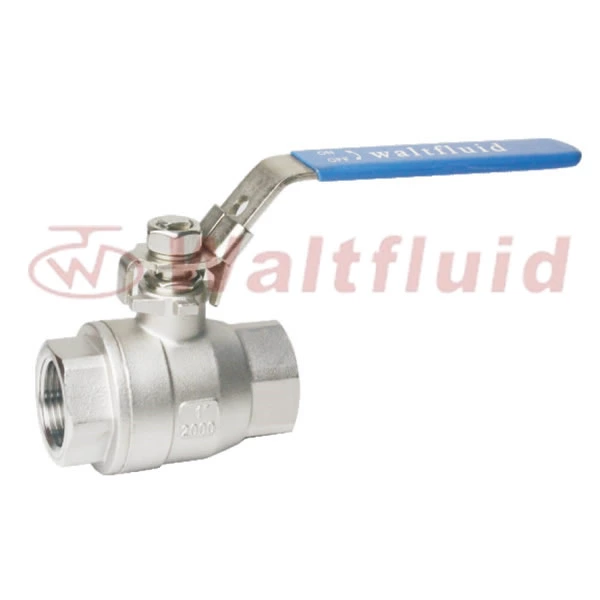
 English
English 中文
中文 Pусский
Pусский  Español
Español
